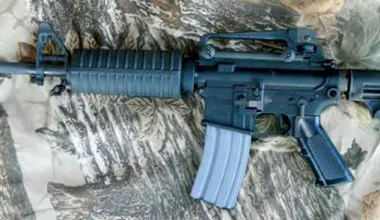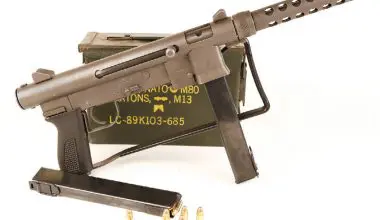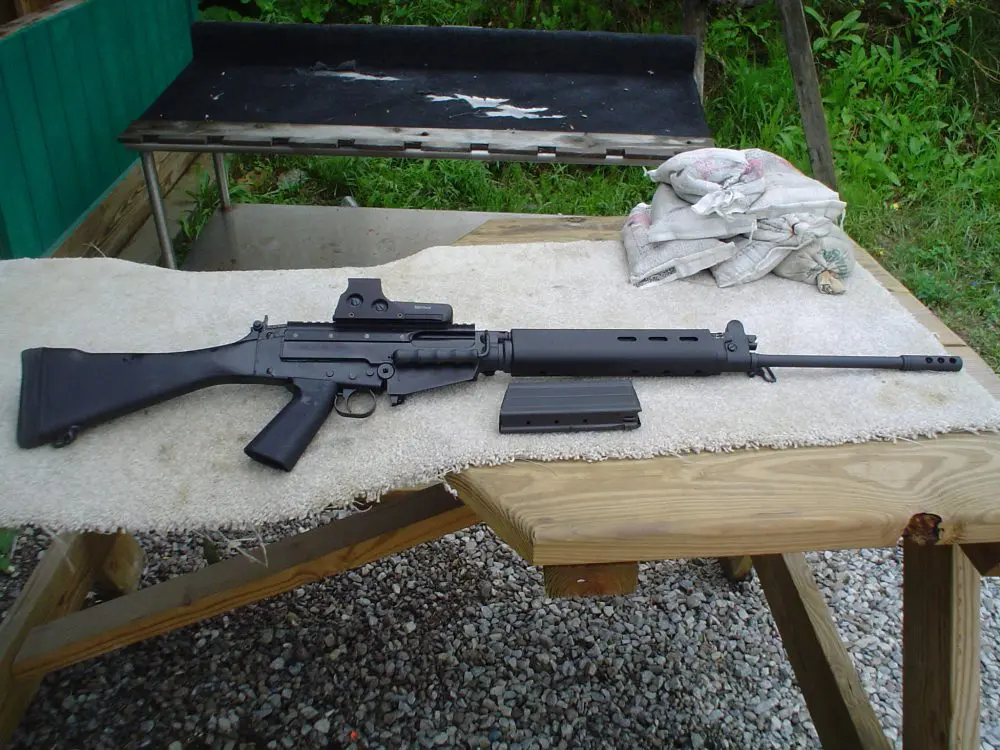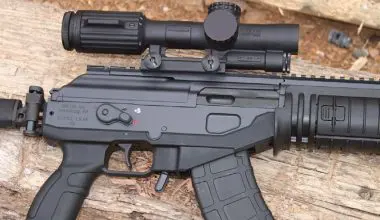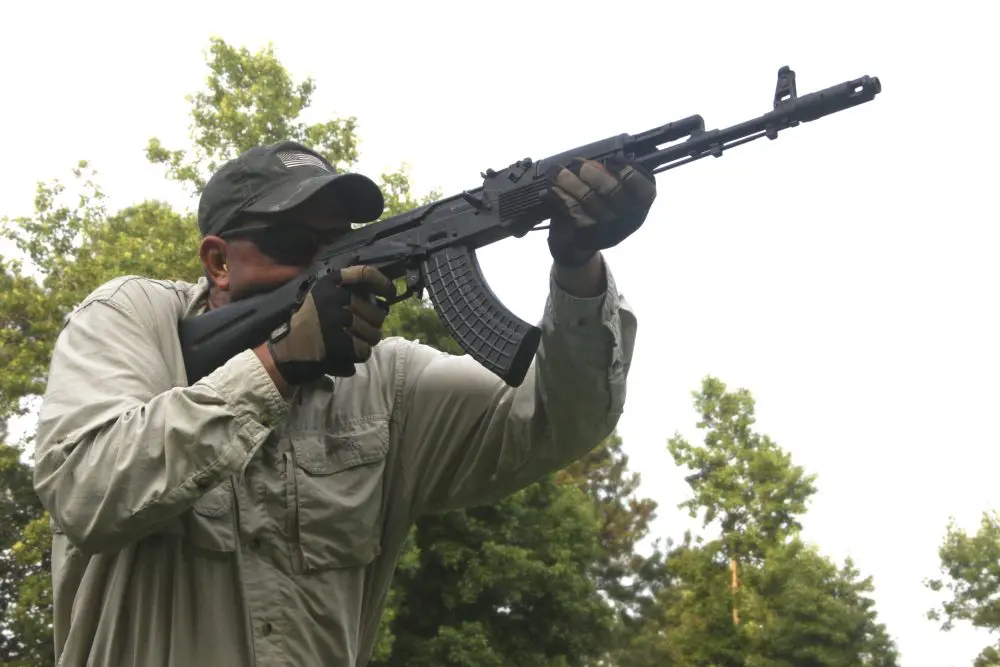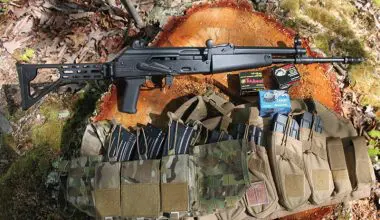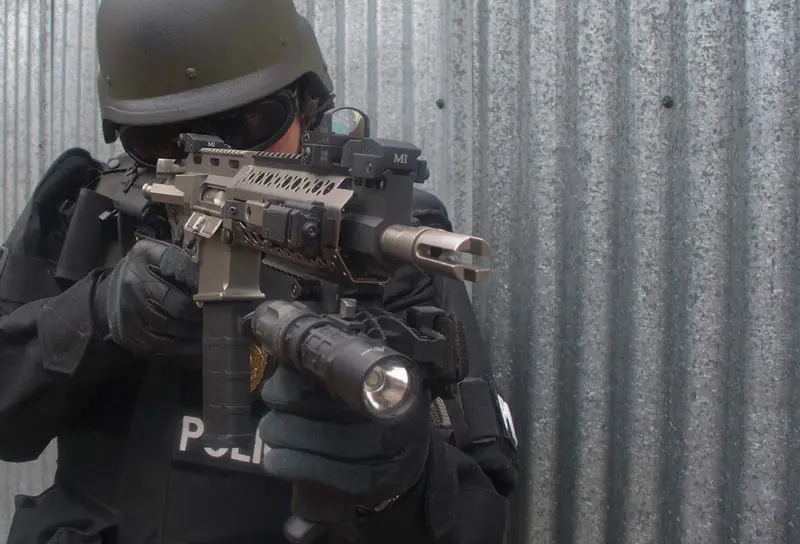
It seems that barrels on rifles were wearing out or were too long for the job, and a quick solution was sought.
Tim Bero, owner of TNW Firearms, was asked to solve the problems and immediately set about seeking a solution. Before the solution could be implemented, however, the Senate/Military moved onto another subject. But TNW’s solution remained and is presented here: the System Gas Piston-Quick Change Barrel (SGP-QCB).
Table of Contents
SGP-QCB SYSTEM
The TNW SGP-QCB is not an exact milspec solution, but it comes very close. The upper receiver is the most obvious and significant alteration to the milspec AR components. A proprietary railed forearm houses the quick take-down components. The forearm is permanently attached to a typically styled upper receiver.
The heart of the take-down system is two levers, one on each side of the forearm. In the open position, the levers have no contact with the barrel. When closed, the levers cam down on the barrel extension, exerting enough force to securely hold the barrel in the upper receiver. The levers themselves are held securely in place against the forearm by a spring latch over the top of each lever.
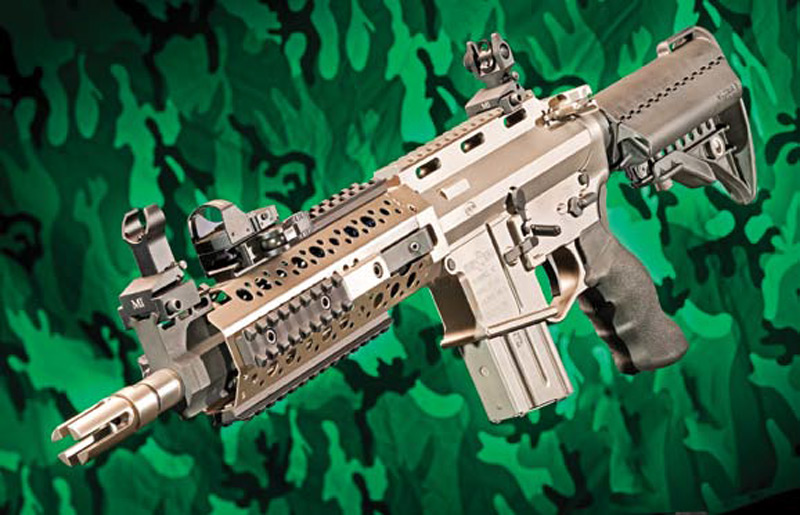
Changing the barrel is as easy as releasing the catch and letting the lever lay open. Remove the barrel by grasping it and pulling it straight out of the receiver and forearm. Then insert a new barrel into the forearm, guiding it into the receiver—this includes the piston rod if so equipped. When the barrel is fully seated, the levers on each side are closed and the ends trapped under the catches. The barrel exchange is complete.
The SGP-QCB system was not intended for mid-battle exchange like a light machine gun would and requiring heavy asbestos gloves. Rather the SGP-QCB is intended for exchange during the planning phase. Urban patrolling might call for a 16-inch barrel. Shipboard anti-piracy assault might require a ten-inch barrel. The SGP-QCB system can accommodate this.
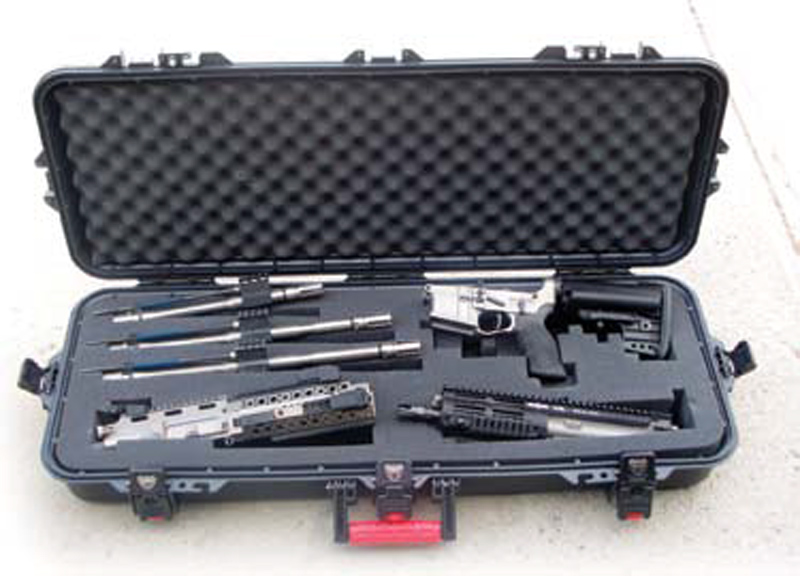
The barrels are essentially milspec. The three barrels presented here are 10.5, 14 and 16 inches from E.R. Shaw, fitted with a gas piston. Because of the interchangeable system of TNW, longer lengths are an option. The operating system can be either gas impingement or piston, but the barrel/receiver/bolt must be the same system throughout. Each of the interchangeable barrels is identically equipped. There is the barrel cut to length, barrel extension fitted, muzzle threaded and gas port drilled. TNW fits a gas block assembly, piston guide ring, and piston and spring assembly. The gas impingement version is similarly outfitted. This is the basic barrel unit. As presented here, the muzzle is fitted with an Arms Tech Mark I muzzle brake.
TNW makes their receiver Picatinny rail slightly higher than usual to accommodate their piston system. The rail height on the forearm is the same as the receiver. The gas block, also fitted with a Picatinny rail, is adjusted for the proper height.
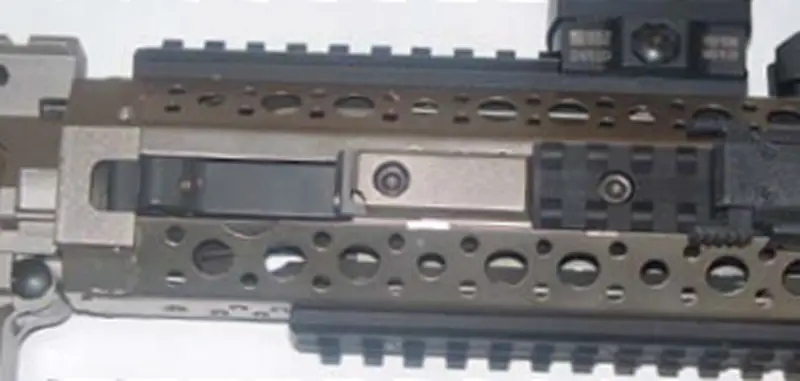
POF SBR
A short-barreled rifle (SBR) is registered under the National Firearms Act (NFA) and therefore general testing, evaluation and handling are greatly encumbered by strict laws. The SGP-QCB is therefore an immensely valuable tool in handling various lengths of SBRs. With the length and breadth of testing that could be done with the SGP-QCB system, a sturdy and reliable registered SBR is required.
The obvious choice was the P416 PDW from Patriot Ordnance Factory (POF). The complete P416 is built from the ground up as an SBR and in this case uses a 7.5-inch barrel with POF’s proprietary gas-piston system. What better platform to test with—the complete P416 for the 7.5-inch barrel length and the TNW SGP-QCB for other barrel lengths? The change takes place very easily. Remove the upper as with any AR. Install the TWN SGP-QCB upper and then change barrel lengths using the TNW system. Other standard features on the POF P416 include ambidextrous magazine and bolt release.
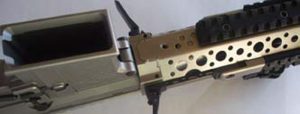
to remove the barrel.
POF has chosen Robar’s NP3 Plus as their standard finish, which greatly increases corrosion protection through its nickel/Teflon finish. The TNW SGP-QCB upper and barrels were also finished with NP3 Plus.
SIGHTS
The principal sighting system chosen was the Burris Fast Fire mounted on the American Defense quick-release mount. ARs of such short length are principally used in the fast and furious environment of close quarters combat, which the Fast Fire red dot sight is intended for.
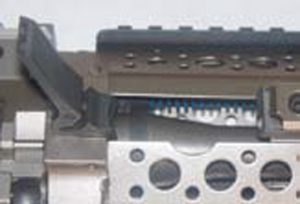
The American Defense mount is equally valuable in case the Fast Fire needs to be quickly removed. The American Defense mount uses a quick throw lever for simple attachment, lock/unlock and removal. The Fast Fire was mounted as far forward on the TNW SGP-QCB rail as possible. In the forward location, the red dot is easy to acquire and does not in any way crowd the shooter’s field of view. Should the unthinkable happen and the battery goes dead on the Fast Fire, backup iron sights (BUIS) are available.
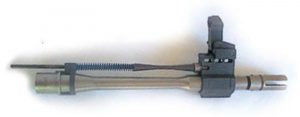
The BUIS chosen for the SGP-QCB were the rugged Midwest Industries Flip-Up Emergency Rear Sight and Flip- Up Front Sight, which lock in place when folded or in the up position. Unlike polymer flip-up sights, the metal MI sights are suitable for mounting on the gas block, which may heat up. Although the iron sights did not co-witness with the Fast Fire, they were completely visible and usable when raised, and the red dot was still in place.
Users should be aware that if the front sight is mounted on the gas block, then it might be a good idea to install additional front sights on each barrel assembly so it is zeroed for the proper length. Alternately, the front sight can be mounted with the red dot on the handguard rail.
SHOOTING MULTIPLE BARRELS
I located the Midwest Industries BUIS on the upper rail of the TNW upper in order to try the barrels in a “grab and go” manner. Opening my Plano tactical case, I attached the TNW upper to the POF lower and inserted a barrel.
I fired three shots and changed the barrel, fired three more shots and performed the final barrel exchange and then fired the last three shots. I could put my hand over the three groups, so I was more than satisfied that in a crunch I could assemble a working firearm with any of the three barrels and be relatively sure of an acceptable level of accuracy.
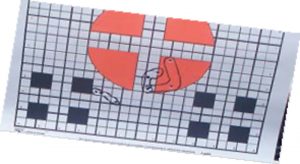
This is not the procedure I would follow if there were time available to do otherwise. With proper time allotted, the barrel would be selected, sights or optics mounted, sights checked for a secure and proper fit, and finally a trip to the range to verify both zero and function.
Safety obviously dictates that the barrel exchange take place in an unloaded weapon. The normal clearing procedure removes all the ammunition and leaves the bolt open for inspection. Note that the barrel exchange process requires the bolt to be locked back. Obviously, this was accomplished when the weapon was cleared.
While conducting the grab and go evaluation, halfway through one barrel exchange, with the bolt locked, barrel out, the bolt closed spontaneously as any AR might do. I found that the bolt seemed stuck in the forward position and I could not withdraw it with the charging handle. Assuming the bolt may have gone too far forward in the receiver without a barrel extension to stop it and became lodged, I took the barrel I was fitting and pushed it in place and tried the charging handle again. Everything worked as normal and I finished installing the next barrel. There was no apparent damage to any of the parts by this interlude.
There were no other functional issues with either the SGP-QCB or the POF. Some of this success can likely be attributed to the NP3 Plus coating on the parts.
PARTING THOUGHTS
For a very long time, the AR-type rifle was stuck in the 1960s. But in the last decade, things have changed and now there is a plethora of aftermarket parts available for the AR family of weapons. The TNW SGP-QCB interchangeable barrel system, with its cutting-edge components, is at the top of the list. Not even discussed here is the possibility of caliber conversion.
The SGP-QCB is a winner and truly an asset to the AR platform.
